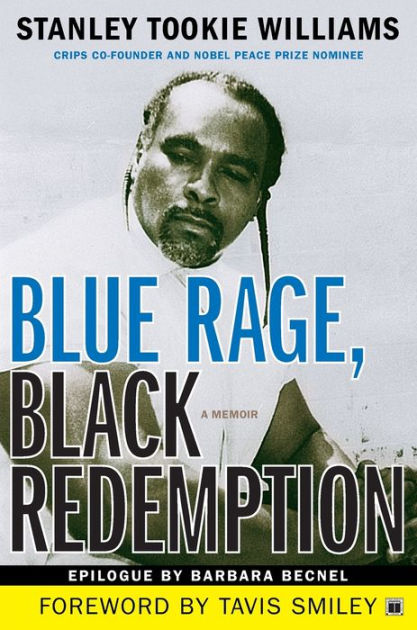This vivid autobiography carefully details the “dys-education” of Stanley Williams in 1960’s-70’s LA, and the story that led to his rise, fall, and renewal. At just over 350 pages, this story may seem daunting, but is an easy read.
Blue Rage, Black Redemption by Stanley “Tookie” Williams dives into his upbringing in Louisiana and his move to South Central, LA, which opened his eyes to the corrupt, violent, and unforgiving reality that faced black people at the time. He grew up as a quiet, unassuming kid, always being the shortest but never failing to gain the respect of his peers. On the school grounds and the streets, Tookie gained a reputation as a fighter; not as a troublemaker, but as a protector. He despised gangs and never backed down from them. His reputation eventually earned the respect of someone who shared his spirit: Raymond Washington. Together with Raymond, he created the Crips to act as a unified group against gangs. The Crips would spread like wildfire, eventually getting out of control and becoming a gang itself. Stanley and Raymonds creation became autonomous, gaining notoriety all over the country. With Stanley’s reputation as the leader and enforcer, he had a target on his back. After years of police set-ups and failed attempts to get Stanley behind bars, his drug habits made him reckless and unconcerned, leaving his guard down. He was convicted for a triple-murder that he fervently denied until his death, and was sentenced to the death penalty at the San Quentin detention center.
In prison, Tookie’s first years were rough as he could not find his footing, bouncing around from jail to prison and having to learn the prison life that he had never experienced before. Prison had its benefits as it allowed Stanley time to think; something he never had time for in the hustle and bustle of LA life. During six years of solitary confinement, Tookie began to self-reflect and connect with his deeper self. He clamored to educate himself, wanting to figure out why his life turned out the way it did. He saw that his environment and the attitude of black people across America was still enslaving them. Realizing this, he slowly became a changed man and saw that the key to freeing himself from the chains of his past would be to help others not make his same mistakes. He overcame the oppressive confines of the prison system, renouncing gang life and vowing nonviolence. He became respected among his peers when he put his dream into action, writing books for children and teens advocating against gangs. He was nominated for a Nobel Peace prize, and won the praise of many outside of prison, but his refusal to acknowledge and admit to his crimes made him unable to receive parole and have his death sentence changed. He was killed by lethal injection, but his story lives on.
Blue Rage, Black Redemption serves as a first-hand warning about the troubles of gangs, and its authentic storytelling perfectly encapsulates the cruel systemic cycle of crime and violence in the black community. This summary just scratches the surface, and reading Stanley’s story is necessary to feel the raw emotion of his storytelling. I would definitely recommend this book, and I am giving it a 4.5/5.
